Cycle 3 (Amy)
Posted: December 14, 2023 Filed under: Uncategorized Leave a comment »Cycle 3: Ready for interaction – Title: ‘Undoing’
Artist Statement:
The roots of this project stem from a very personal experience. In October, unexpectedly, I was faced with the break down of an 8 year relationship. This caused a shattering of self which spun things out of control and messily permeated all areas of my life. It was a hard reset. I stopped eating. The ground disappeared beneath my feet and I could not summon any semblance of rationality. It also erased the need to cling to complex processes and technique which I had previously used to hide behind. It demanded a stripping down to raw honesty in myself and my work that felt both unfamiliar and deeply uncomfortable. I did not want to forget.
Grounded in Pauline Oliveros’s philosophy on deep listening, I explore the dissolving of self as an experience in the form of an interactive audio-visual installation. I believe productivity stems from the human desire for proof of existence which causes us to do, undo, and redo over and over again. To challenge this notion, I invite viewers to let go of the need to do and simply ‘be’ as they are relieved of their burden of self in the tangle of others. Simultaneously overwhelming and gentle, the outcome of the work is indeterminate and depends on the willingness of the viewer to engage and shape their own experience.
As a demonstration of the interdependence and power of interconnectedness, this project exists both also as a large-scale collective experience for 10+ participants, where the actions of each person impacts the overall outcome, as well as a solitary experience for one participant alone with headphones. Further development in Cycle 4 and beyond will include exploration into different spaces both inside and outside, framing the piece in ritual by using tactile materials such as sand, and ornamentation on lightbulbs as well as other sources of light reactivity. As a performance piece, I would like to explore methods of generative improvisation through the use of DAWs, as well as a purely acoustic version where people sing in a room together.
Reflection:
In this iteration, I was mainly interested in the responses of the participant. I devised several versions of this piece for various groups with the intention of creating a different experience for each situation. As the maker, instead of my usual eagerness for validation, I took a step back and observed. I was curious to see how people interacted with the piece out of context. Did they approach with apprehension? Were they able to be playful? How long did they stay for? Did they grasp for control? Did they allow for a collaborative experience? Were they able to take it in?
The more people engaged, the more I realized that the feedback of each participant told me was more about what kind of person they were than the actual piece. This was such a gift! I learned so much about what it means to have an experience and how to cultivate a sense of freedom and agency in a work.
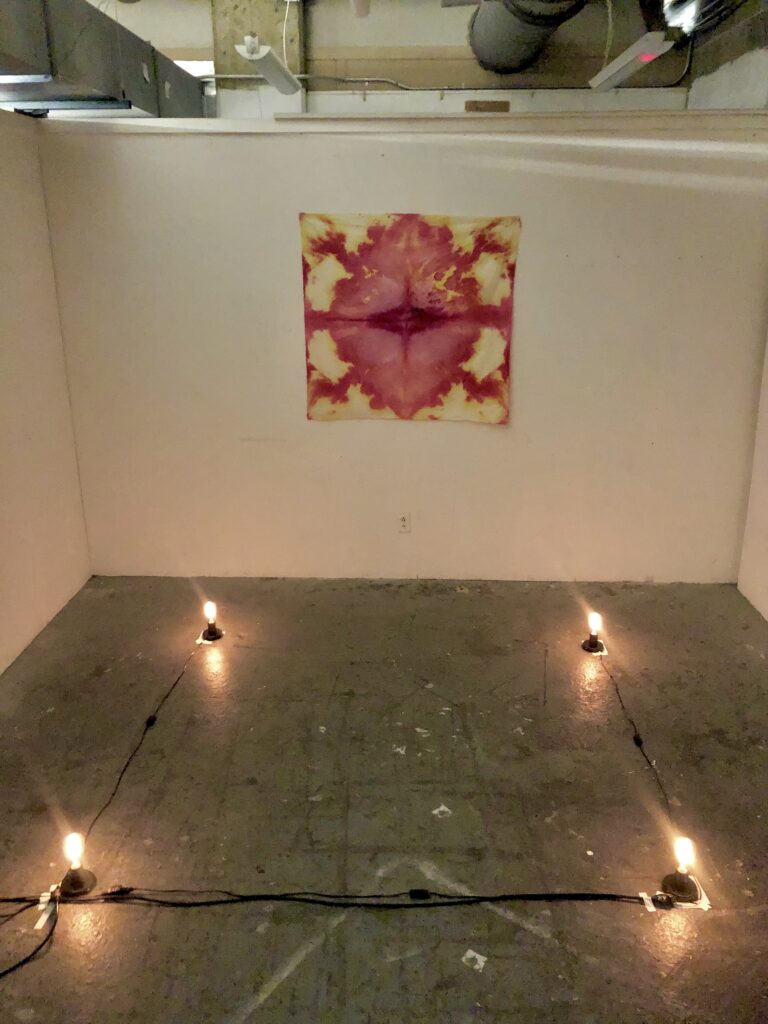
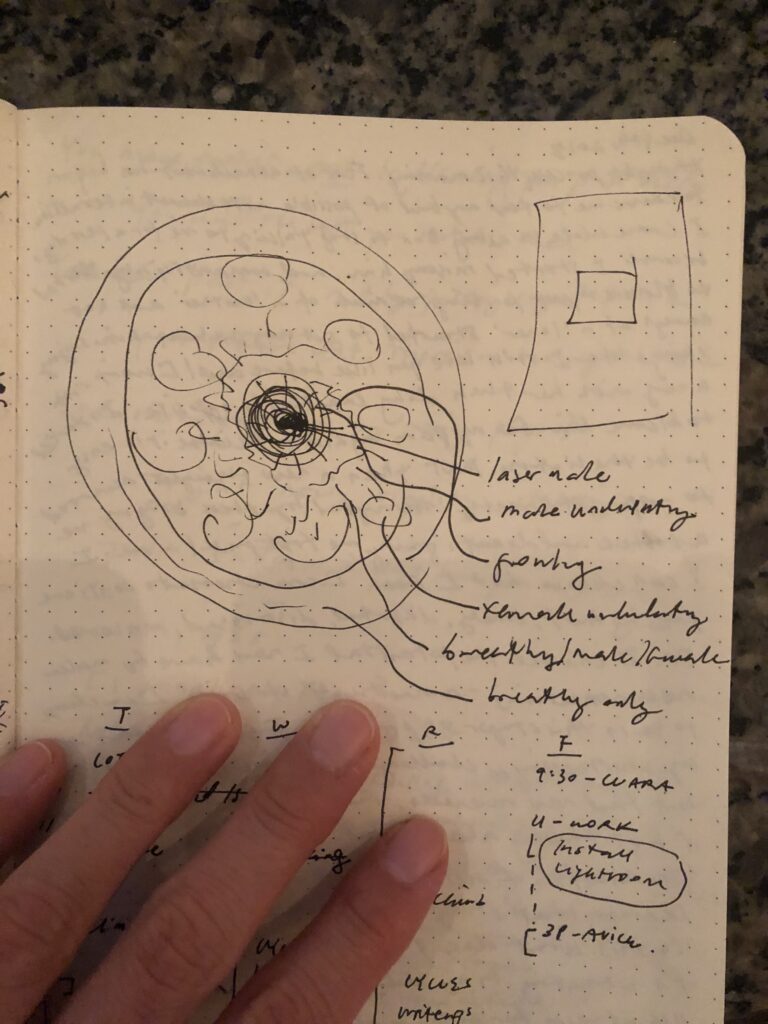
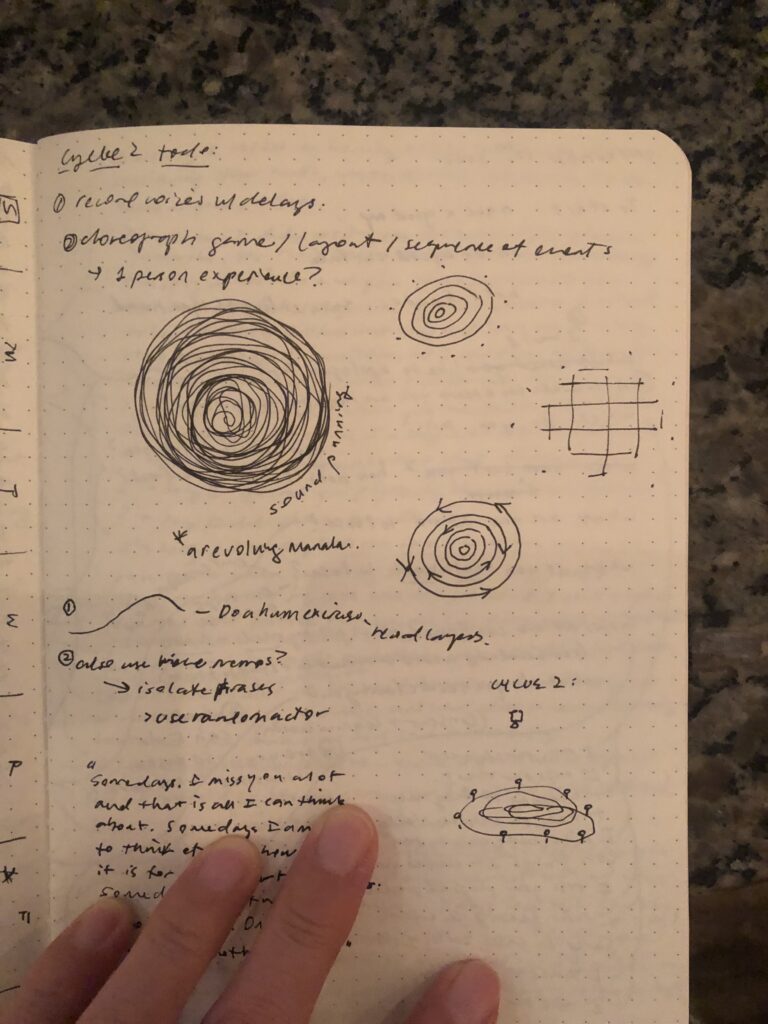
In terms of the piece itself, for Cycle 3 I mainly worked on refining the layering of voices and how they would fit into the shape of a mandala (for the rug!). For the final presentation in the motion lab, the sound formed a 5 layer mandala. I asked a vocalist friend (a true bass!) to record some very low tones for me. I placed these tones in the very center of the mandala and then gradually expanded outward from high vocal intensity to gentle sustaining tones to breathing on the outmost circle. During our final DEMS critique, I was thrilled to see how spontaneous and playful everyone was in their approach to the piece. Pure JOY!
Untangle – loosen – untie – undo is the mantra I have adopted through the creation of this work. In contrast to my previous need to finish a work and then determine it good or bad, I hope to continue developing iterations of this project embraced by the idea that we too exist in cycles.
Cycle 2 (Amy)
Posted: December 14, 2023 Filed under: Uncategorized Leave a comment »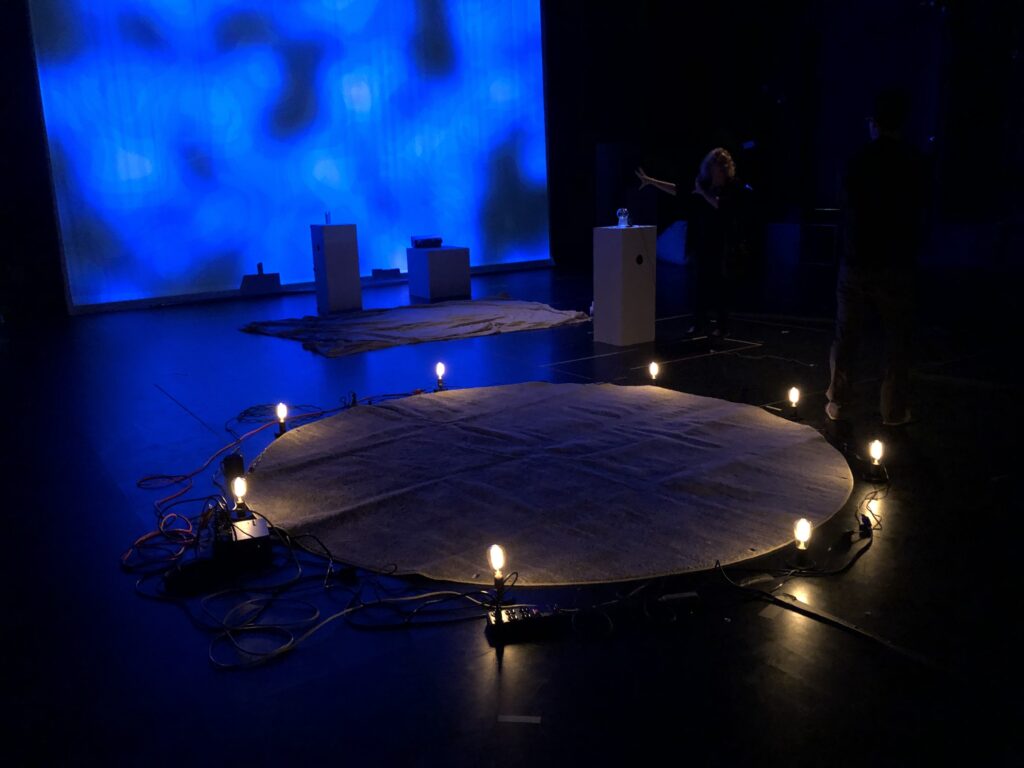
Cycle 2: Implementation and expansion – working title: ‘Annihilation of self’
November 14th goal: Create a piece that allows for a fluid collective experience for the class.
Inspiration: ‘Deep listening takes us below the surface of our consciousness and helps to change or dissolve limiting boundaries.’ – Pauline Oliveros
Implementation: acquisition of resources and programming
- Light –
- 8 dimmable lightbulbs
- 8 socket bases
- Chauvet DJ DMX 4-4 channel (lightbulbs > Enttec)
- Enttec USB Pro (DMX > Computer)
- Motion –
- Orbbec Depth Sensor (installed on ceiling of Motion Lab)
- Sound –
- Solo voice improvisation, recording, layering
- 2 Portable Speakers
Reflection:
Developing from Cycle 1, mostly a sketch using motion detection, translating to sound and light reactivity, Cycle 2 really fleshed out the the piece and set up for a collective experience in preparation for Cycle 3.
A crucial addition was CG’s fantastic 11ft circular rug! It provided the perfect layout for our group and served as a physical ‘score’ for the piece. To detect motion, we hung an Orbbec from the ceiling facing the floor, which provided a bird’s-eye-view for my reactivity map. As people stepped onto the rug, the Orbbec would trigger sound and light in response to their position and movements. In Isadora, the mechanisms for operation were: OpenNI (Orbbec detection) > Luminance key > Alpha Mask (for circular crop) > Eyes++ > blob detection, which then controlled the volume of sound files on loop and levels of brightness for the DMX output.
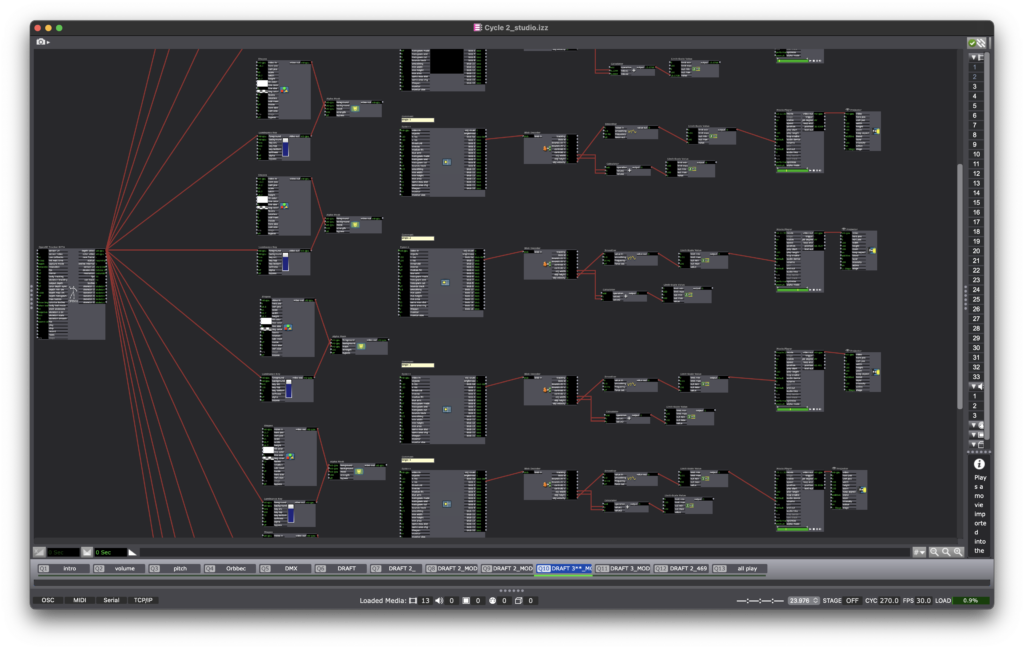
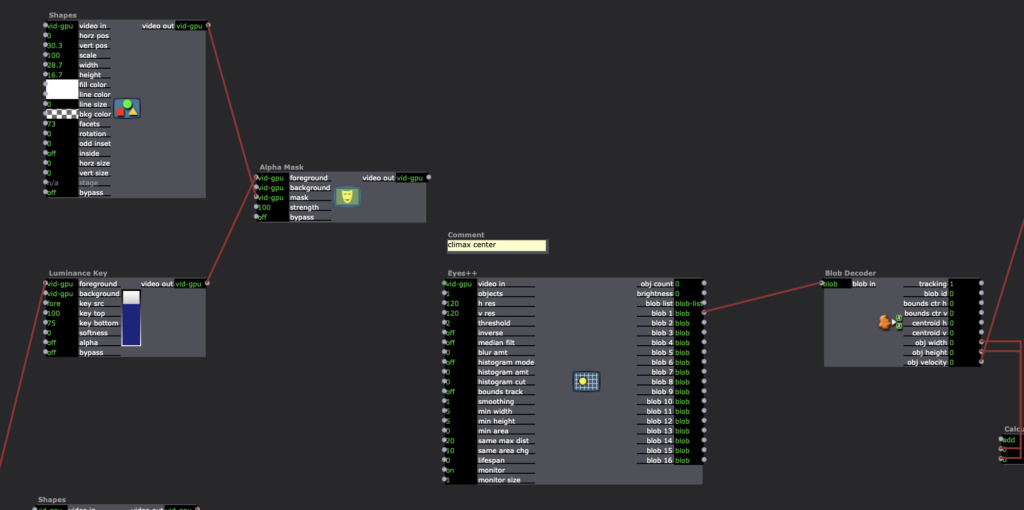
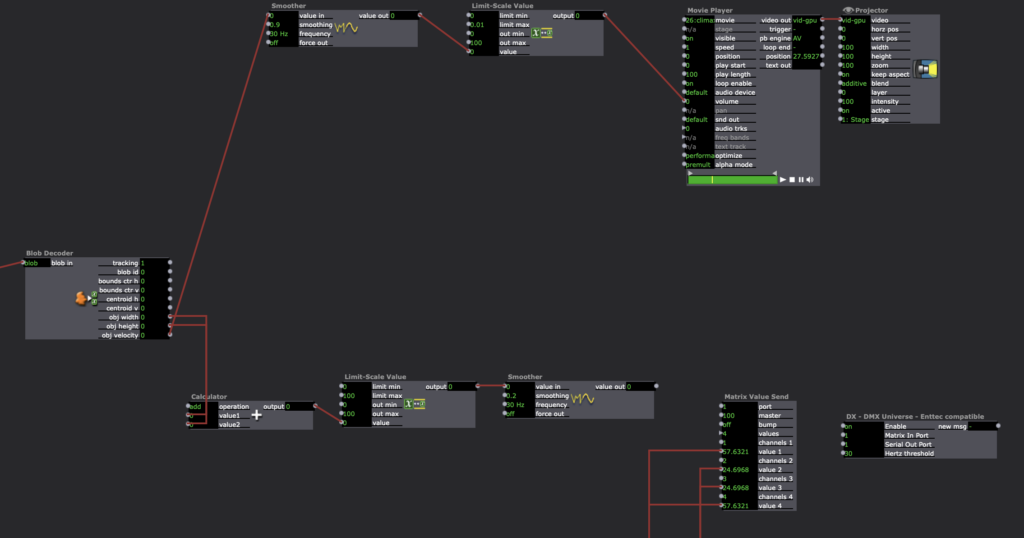
The biggest challenge for this iteration was the set up. Because each lightbulb required its own extension cord, the set up and tear down became quite labor intensive and each took about an hour. It was definitely worth the effort. The lightbulbs were entrancing! Seeing the initial concept of light and sound ‘waking up’ to physical presence was utterly magical. Much credit goes to Nico for generously providing mesmerizing dance as a quick demo. Thanks Nico!
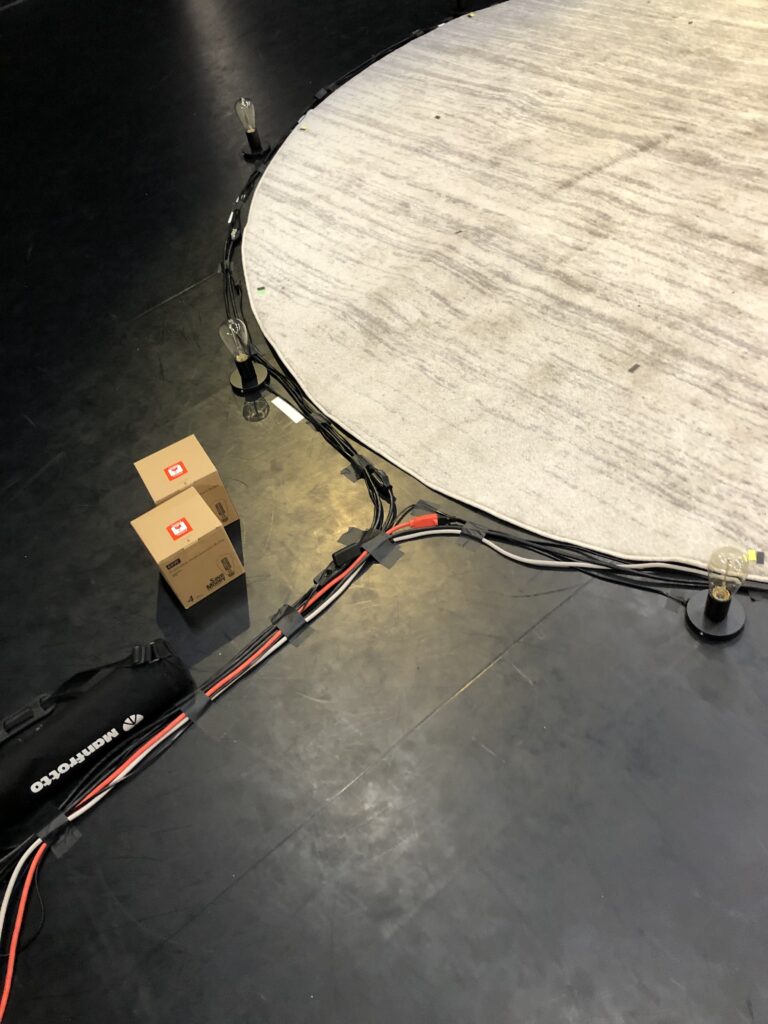
Cycle 1 (Amy)
Posted: December 14, 2023 Filed under: Uncategorized Leave a comment »Cycle 1: research and experiments, Initial title – ‘the things you don’t see’
October 11th goal: I would like for someone’s presence, just being, to be sensed. They are reacting to the system reacting to them, it’s reciprocated, ongoing. The feedback loop of interaction.
Research: keywords and quotes from Quantum Listening by Pauline Oliveros
- ‘Listening field…’ – pg 13
- ‘Listening to their [audience] listening.’ – pg 16
- ‘Deep listening takes us below the surface of our consciousness and helps to change or dissolve limiting boundaries.’ – pg 38
- ‘What if you could hear the frequency of colors?’ – pg 40
Reflection:
In this initial stage, my desires were a jumble. I had the vague idea of creating an interactive audio-visual installation that ‘woke up’ to physical presence and responded generatively to subtle bodily movements. I was also very intrigued by the concept of deep listening and the philosophy of Pauline Oliveros during this time, particularly, her work ‘Teach yourself to Fly.’ In this work, a group of people sing together, responding to and diverging from the voices of those around them. The result is an organic sound cloud that is ever shifting, highlighting breath, fluidity, and a state of impermanence.
Alex provided guidance by helping me sift through my thoughts and in constructing a clear directive. The first was – how do I use the Orbbec to pick up movement and how is that reflected through programming in Isadora? Second – how do I transfer this response onto a lightbulb using a DMX box? Third – how does the motion translate or manipulate sound output?
In Cycle 1, I programmed the bare bones of motion and sound reactivity in Isadora. AND got the lightbulbs to work, yay!
PP3: Living and Alive!
Posted: October 19, 2023 Filed under: Uncategorized Leave a comment »Inspired by Csuri’s use of feedback, duplication and circular repetition, as well as the ‘Nervous Tick’ animation, I continue developing the idea of living typography with an added sound-reactive element.
In addition to the motion sensor in the first scene, there is a sound trigger that leads us into the next scene. This was an idea I had for the first iteration but could not achieve without Alex’s help (thanks Alex!) So, the motion sensor triggers a text that says ‘Clap Clap Clap for me!’ which tells the audience to make sound, which in turn triggers the next scene to enter.

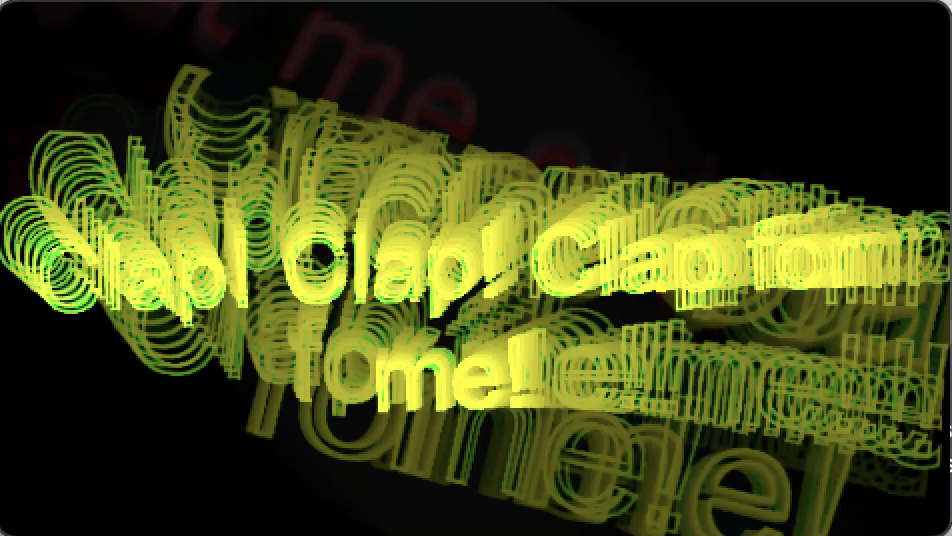
The sound element was an exciting new element to work with. Unlike the motion sensor, a clap is very energetic. Suddenly, the room was filled with life, which fueled the appetite of the creature. In scene 2, claps (or the sound-reactive element) altered the size of the creature, allowing it to emerge from the depths each time sound was detected. After watching it with the class, I had hoped I re-exported the video clip to be on black background and added a fade to the movement so that there was an overlapping effect between each clap and the rectangular edges wasn’t so clear.
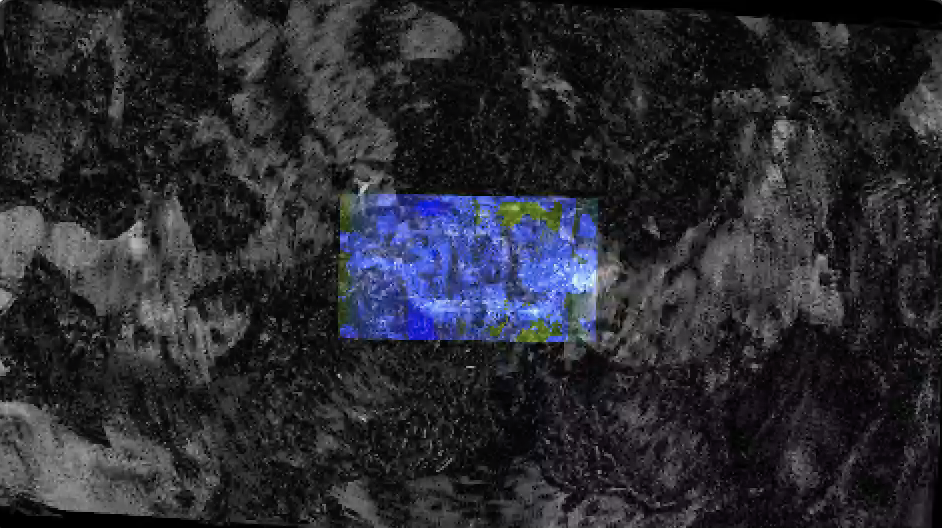
In the next scene, I introduced a new sound-reactive only animation. Built using heavy feedback, I wanted to create a portal that also activated based on claps or sound engagements from the audience.
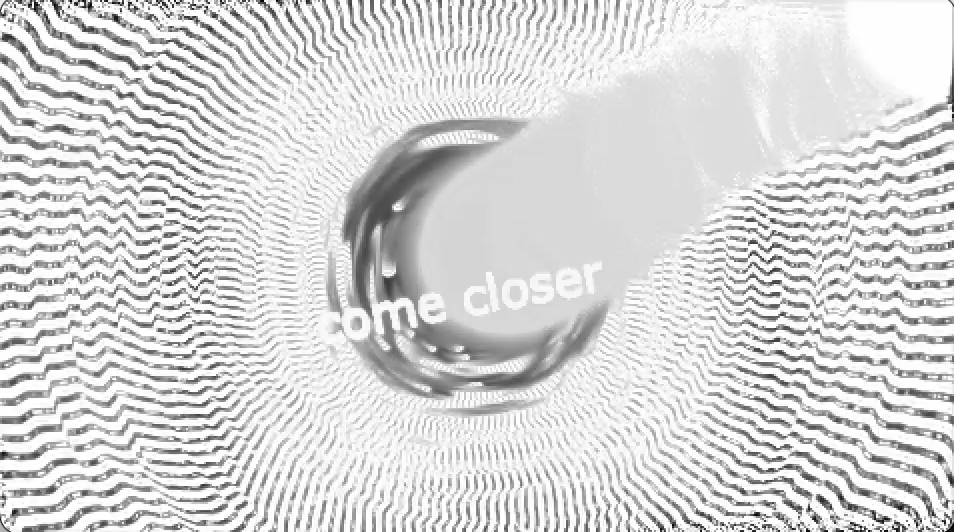

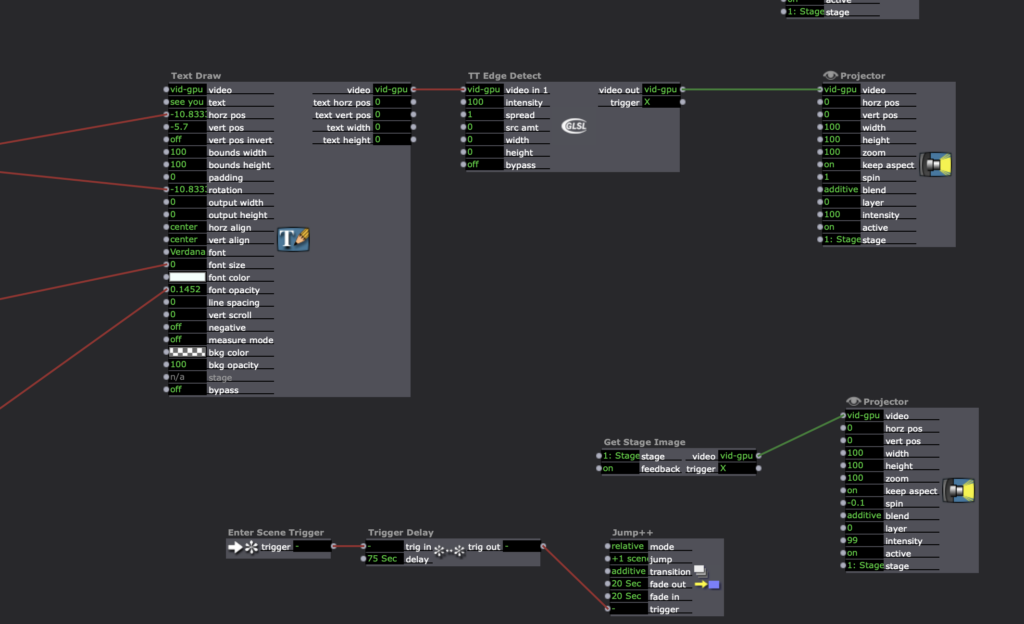
Programming-wise, the new elements in this scene includes an audio-reactive shapes actor and double feedback through ‘Get Stage Image’ using text. I’m not sure exactly how I created this look, so there was a lot of experimenting going on. In this scene, I felt visually creative for the first time using Isadora and would like to explore the combination of these actors further.

To finish off, we use ‘come closer’ through audio detection to return to ‘See you in your dreams’ which goes back to motion detection. Overall, I’m very satisfied by all the rabbit holes I managed to hop into with this project. It felt like a cohesive piece and each experiment was really fun and exciting!
PP2: Living Typography
Posted: October 19, 2023 Filed under: Uncategorized Leave a comment »The inspiration for this project was ‘Nervous Tick,’ an animation by Chuck Csuri. I loved the way the shapes felt ‘alive’ in their movements, almost reacting to those watching them. I also wanted to give the computer presence a voice through the use of typography. The interaction between image and viewer was my impetus for creating this work.
Everything in this first iteration is motion triggered and set off through time delay. Using a webcam, filtered through the ‘Difference’ and then ‘Eyes++’ actor, the motion sensor in it detects movement, which sends triggers for text to appear. One motion sensor actor (above) has a longer delay time and allows for a smoother interaction from human movement to text output. The second motion sensor is set up to be quick and jittery. I did this to give emotion to the creature.
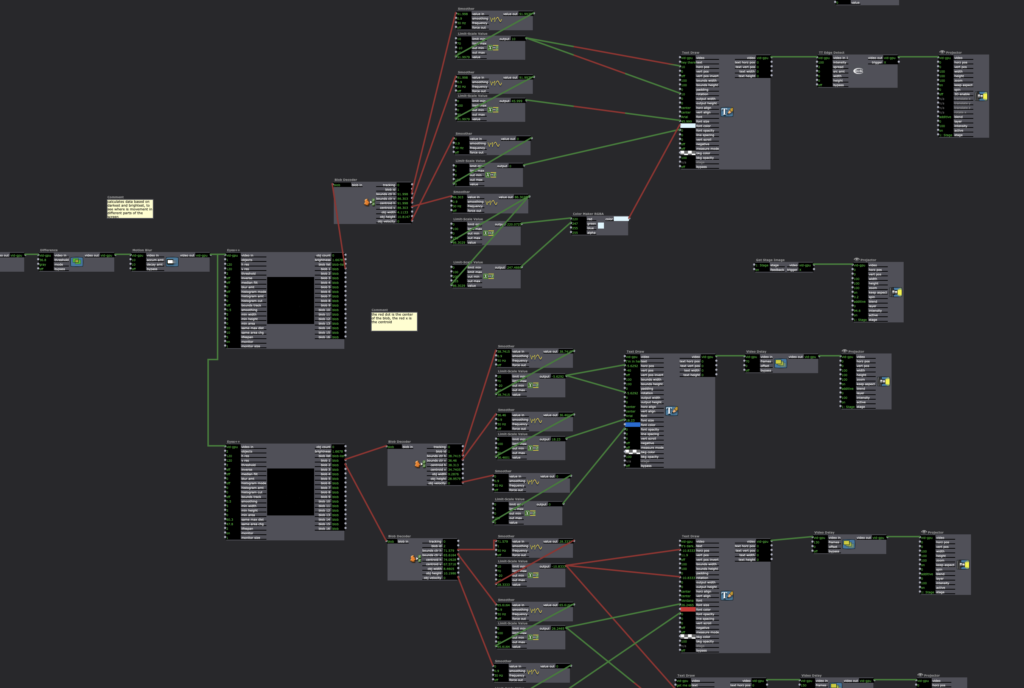
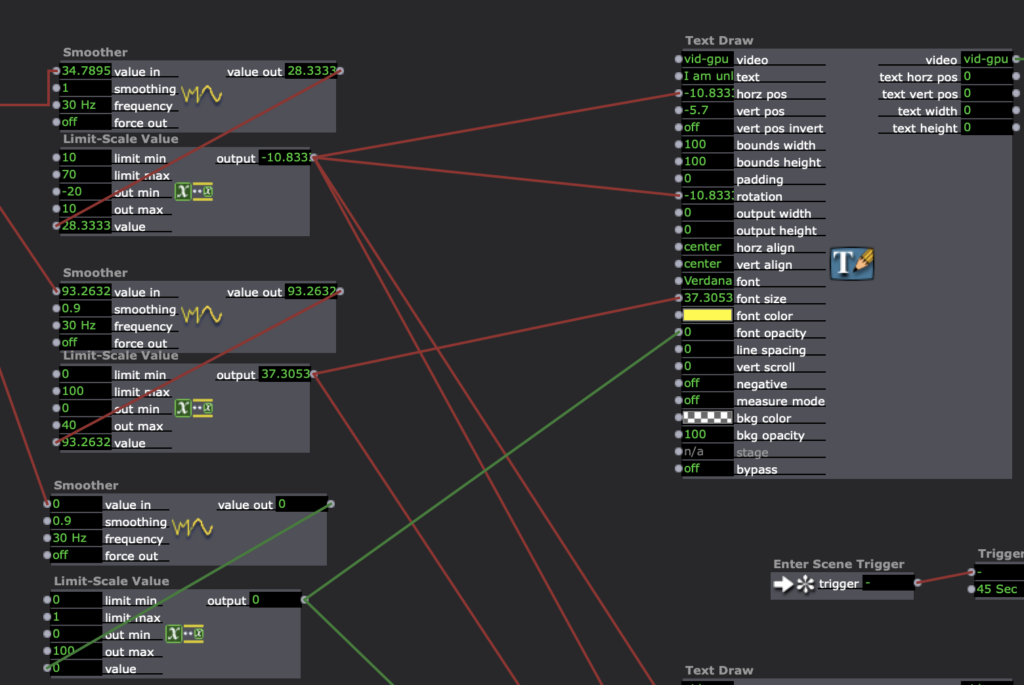
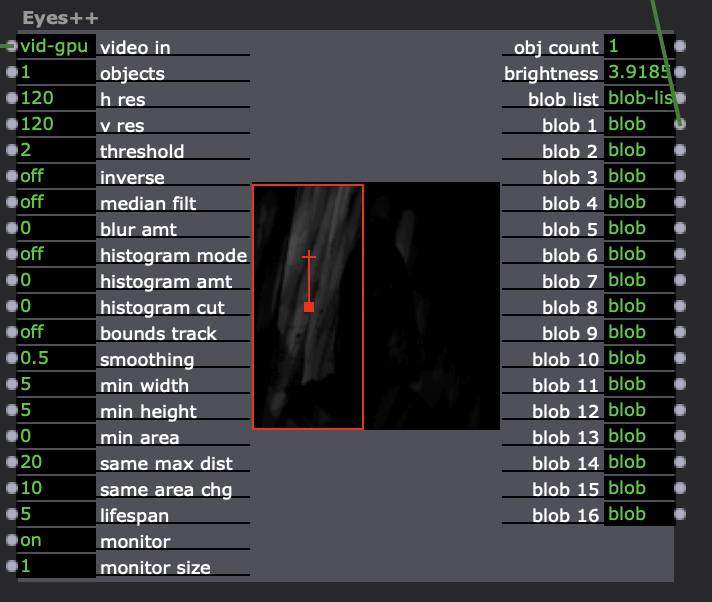
Text in the first scene includes ‘Hey There!’, ‘I’m in here!’, ‘It’s dark..’, ‘Let me out!’
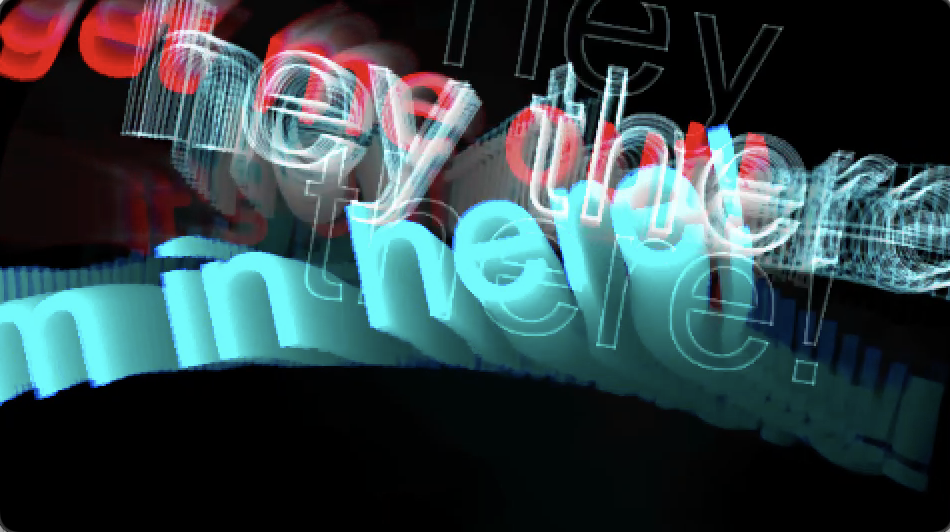
At first, the viewer is not sure whether the character is innocent. From audience reaction, I gathered people thought the creature was the victim. It is revealed in the next scene that it is an unpleasant virus looking thing that has been unleashed and will ‘see you in your dreams.’

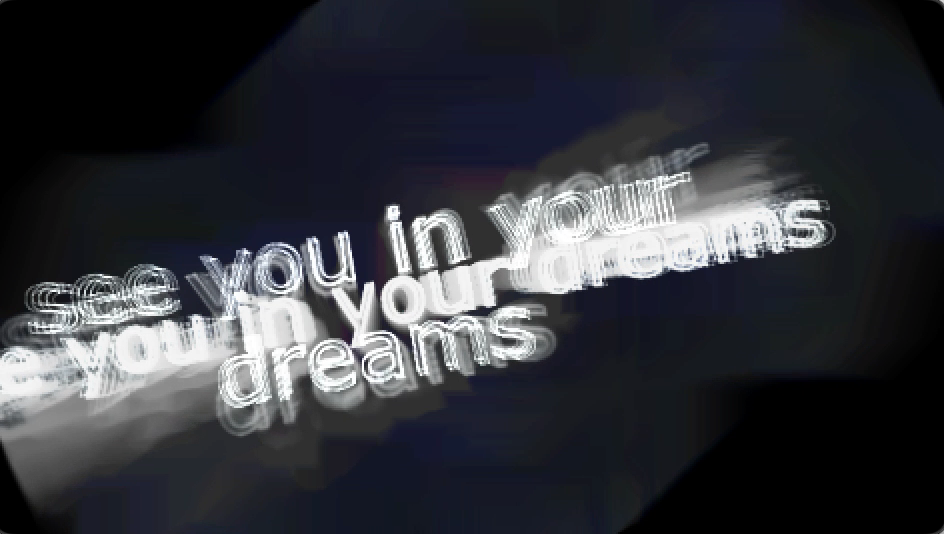
A new element in this project is the use of feedback through the ‘Get Stage Image’ Actor plugged into Projector. It creates a melting effect similar to datamosh that really gave it an organic feel.
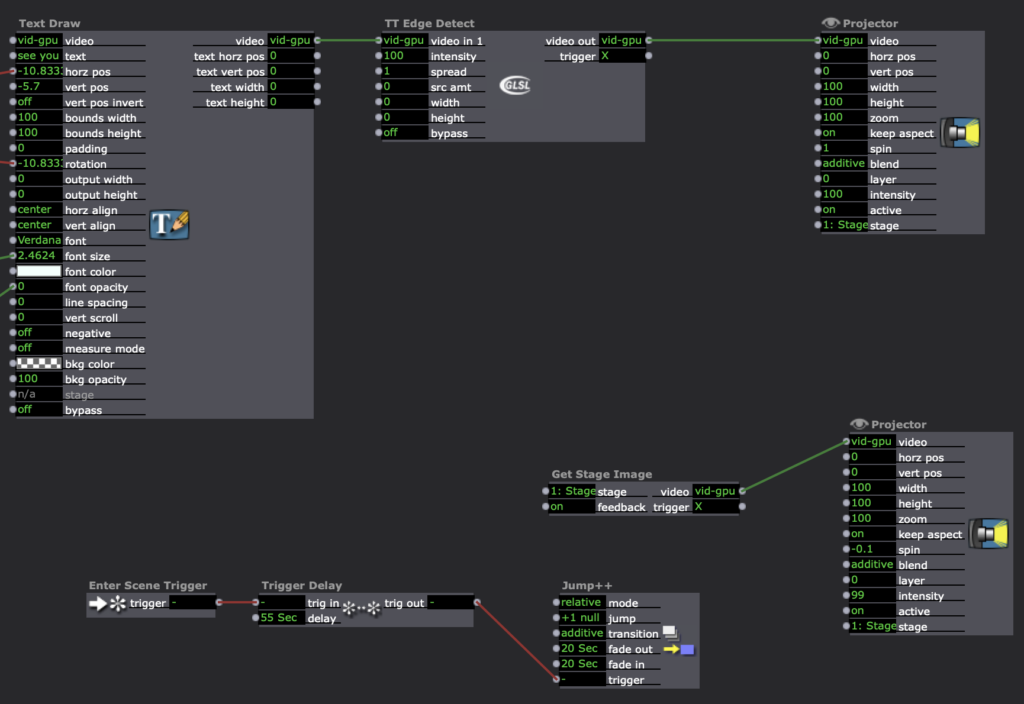
Sound Reactivity LAB
Posted: September 26, 2023 Filed under: Uncategorized Leave a comment »In this sound reactivity patch made with Lexi, I animated three orbiting circles to music. The movement of each circle is generated by Sound Frequency Bands which through using a combination of Smoother, Limit-Scale Value and Color Maker RGBA. The movement idea came from using Spinner and Wave Generator, which is finally filtered through Motion Blur at the end. I really like the way the movement reacts to the beat by jumping in and out of orbit in a symmetrical way.

My biggest takeaway putting this together was actually the usefulness of the Limit-Scale Value. I also realized I was not clear on what limit min/max vs. out min/max meant and Lexi helped me to understand.
PP1: Experiments in Synchromism
Posted: September 12, 2023 Filed under: Uncategorized Leave a comment »In this first plunge into Isadora, my main goal was to get to know the program through experiments in seeing. Using ‘synchronism’ as a guide (an art movement that draws analogies between color and music), I focused on orchestrating colors and the pacing between shapes.
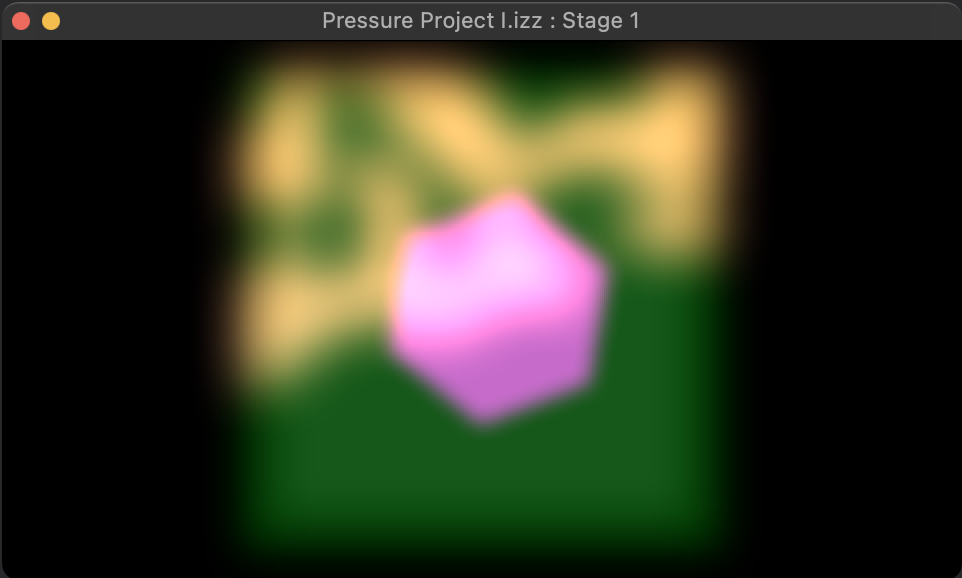
In the first scene, there are three elements at play: the pink transformer emerging from the depths, a green pulsing square sponge, and a blurry animated layer that gently envelops the two. [CG mentioned that the shapes had an organic feel, this may have something to do with the way they ‘breathe.’] The pacing of each shape was an important part of this scene, as a response to the prompt’s challenge of 20 seconds. I felt that if I could let the viewer watch the emerging pink transformer with anticipation, they would get the idea that you have to ‘wait and see’ rather than assume the loop will continue. In the programming, there was a wave generator altering color (+alpha), scale, and facets.

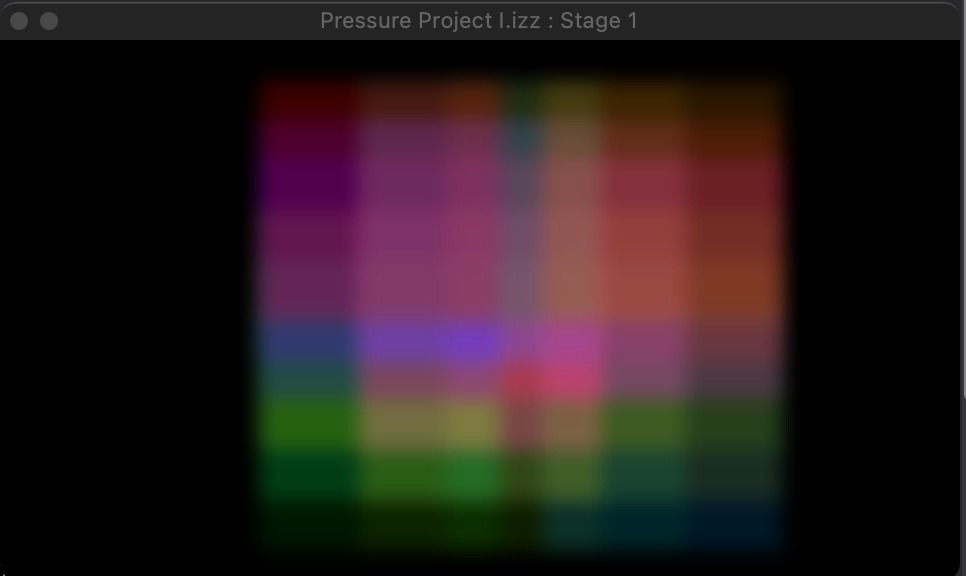
In the second scene, which was meant to be a continuation of the play of pacing, I encountered some technical difficulties (which Alex helped to resolve!) I wanted to create a prism where each square undulated at a subtly different speed so that they would influence the color of the next layer. You would ideally see all the layers in an unending loop, it sounded like a harp in my head. This worked for a good while until I created a new scene and then everything synched to one pulse, erasing the careful layering I had done earlier. Having spent so much time on that, I felt quite frustrated and gave up. The programming for this section comprised of a multitude of squares using wave generator influencing color + alpha. I placed each square so they would overlap with three vertically and three horizontally. Next time, I’ll make the squares very small rather than overlap so they act like pixels.
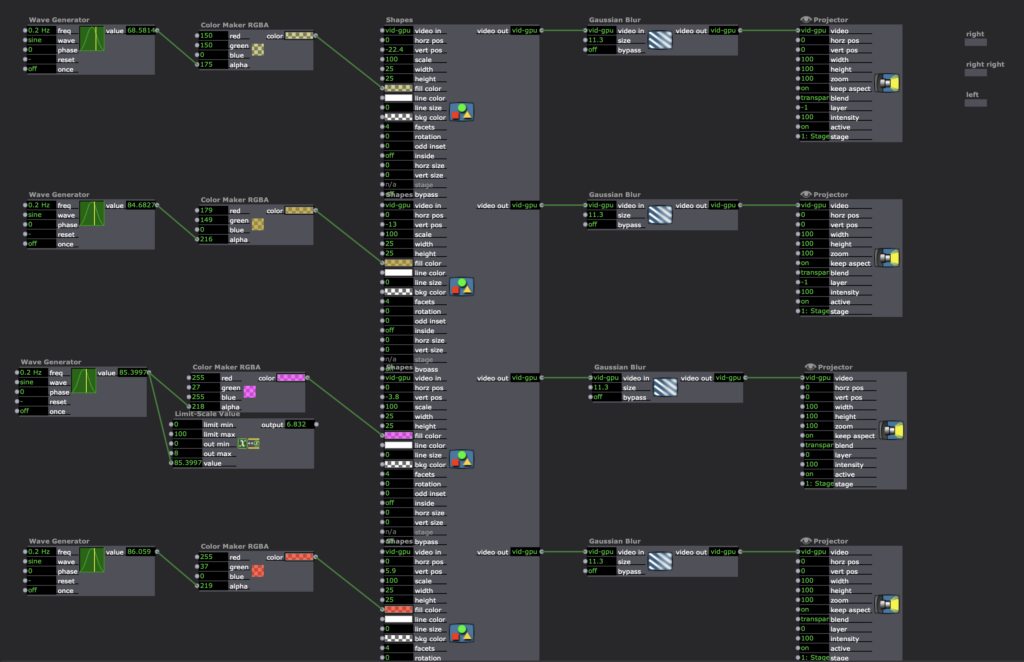
To be continued.
Conclusion: I learned a lot! I love the suggestion of the class to arrive at a place of clarity. Perhaps, another shape could emerge that is an amalgamation of the prism. I also really enjoyed seeing everyone’s interpretation of the prompts and was particularly impressed by the imaginative storytelling in every project. Kudos!